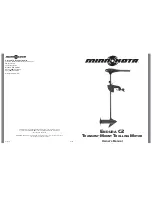
EVGA Z390 FTW (123-CS-E397)
- 52 -
one drive fails, the array fails. It MAY be possible to recover the data but that usually
requires a data recovery service, which is not guaranteed and is usually very expensive.
RAID0 is typically only limited by the controller; however, you will get severely
diminishing performance returns after 4 drives. If you go above 4 drives, you will also
see more capacity loss after creating the array.
The Good-
it can greatly increase the read/write speed of drives
The most storage capacity-friendly use of drive space compared to other array
types.
The Bad
RAID0 has no redundancy, which makes it very volatile, if you lose even 1
drive, you lose everything.
If you use this method, make sure to back up often.
Below is the breakdown of RAID0’s function and the breakdown of a drive failure in
this type of array. Wherever you see the section labelled “DATA” at the bottom turn
red, this indicates an array failure.
As RAID0 has no fault tolerance, even a single drive failure compromises the array and
renders the array Failed and unrecoverable.
P-DRIVE1
P-DRIVE2
P-DRIVE1
P-DRIVE2
P-DRIVE1
P-DRIVE2
DATA-A
DATA-B
DATA-A
DATA-B
DATA-A
DATA-B
DATA-AB
DATA-AB
DATA-AB
L-DRIVE =
≃
2TB
RAID 0 (2 Drive)
















































